GCA
-
Official Full Name
grancalcin, EF-hand calcium binding protein -
Overview
This gene product, grancalcin, is a calcium-binding protein abundant in neutrophils and macrophages. It belongs to the penta-EF-hand subfamily of proteins which includes sorcin, calpain, and ALG-2. Grancalcin localization is dependent upon calcium and magnesium. In the absence of divalent cation, grancalcin localizes to the cytosolic fraction; with magnesium alone, it partitions with the granule fraction; and in the presence of magnesium and calcium, it associates with both the granule and membrane fractions, suggesting a role for grancalcin in granule-membrane fusion and degranulation. -
Synonyms
GCA;grancalcin, EF-hand calcium binding protein;grancalcin, EF hand calcium binding protein;grancalcin;GCL;OTTHUMP00000162937;OTTHUMP00000204639;grancalcin, penta-EF-hand protein;grancalcin, EF-hand calcium-binding protein
Recombinant Proteins
- Human
- Rhesus macaque
- Mouse
- E.coli
- Mammalian Cells
- Human
- HEK293
- Wheat Germ
- In Vitro Cell Free System
- GST
- His
- T7
- Non
- Flag
- Twin Strep
- Avi
- Fc
- DDK
- Myc
Background
What is GCA Protein?
Grancalcin (GCA) is a calcium-binding protein found in abundance in neutrophils and macrophages, fitting into the penta-EF-hand protein family with five calcium-binding sites. When calcium and magnesium ions are present, it binds to cellular granules and membranes; otherwise, it stays in the cytoplasm. GCA plays a role in helping neutrophils stick to fibronectin and forming adhesion points. It’s involved in cell adhesion signaling and apoptosis regulation. Abnormal GCA expression links to conditions like acute and chronic dacryocystitis and is tied to the innate immune response. Thus, GCA is key in cell biology, immune reactions, and disease progression.What is the Function of GCA Protein?
Grancalcin (GCA) is a calcium-binding protein rich in neutrophils and macrophages. It typically resides in the cell cytoplasm without divalent ions but binds to granules and membrane parts in the presence of magnesium and calcium ions. GCA helps neutrophils adhere to fibronectin and form adhesion points, and it’s also involved in signaling pathways related to cell apoptosis and adhesion processes. In bone health, GCA is linked to age-related secretion that can induce the senescence of skeletal stem/progenitor cells, affecting fracture healing. During immune responses, aging immune cells release GCA, potentially promoting bone aging. Thus, GCA plays a vital role in cell biology, immune reactions, and disease development.GCA Related Signaling Pathway
Grancalcin (GCA) protein is key in various processes, especially immune responses and cell adhesion. In neutrophils and macrophages, GCA aids adhesion to fibronectin and helps form focal adhesions. It also interacts with proteins like low-density lipoprotein receptor-related protein 1 (LRP1) in microglia to influence how amyloid-beta is cleared, affecting Alzheimer’s progression. Additionally, in bone aging, GCA influences the osteogenesis process via the Plxnb2 pathway. In cardiovascular health, it interacts with G protein-coupled receptor (GPCR) pathways, impacting heart functions. Overall, GCA plays a vital role in regulating immune cells, signaling, and aging-related diseases.GCA Related Diseases
Grancalcin (GCA) is a calcium-binding protein found in immune cells like neutrophils and macrophages. It’s linked with several health issues, particularly in immune regulation, neurodegenerative changes, and bone health. Among its roles, GCA influences Alzheimer’s disease progression by increasing with age and worsening cognitive decline. It’s also involved in conditions like giant cell arteritis and polymyalgia rheumatica. In terms of bone health, GCA affects bone formation and fat generation via the Plxnb2 signaling pathway, playing a key role in bone aging. Blocking GCA can improve bone health in mice, indicating potential osteoporosis treatments. Additionally, GCA aids wound healing and blood vessel formation in diabetic conditions. Therefore, GCA is crucial in various diseases, making it a promising target for therapies.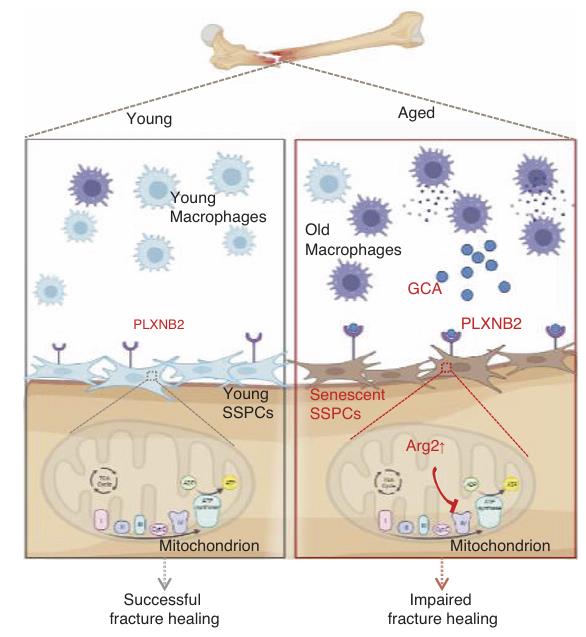
Fig1. Schematic model for GCA-PLXNB2 transcription signaling in impaired fracture healing in aged mice. (Nan-Yu Zou, 2024)
Bioapplications of GCA
Recombinant GCA protein plays a significant role in research, industrial production, and medical studies. In research, it garners attention due to its involvement in cell adhesion and cytoskeletal dynamics, revealing its multifaceted role in cell biology through its calcium-binding properties and interactions with other proteins. In industry, GCA protein applications include developing biological products as biomarkers and monitoring drug-target interactions in pharmaceutical research. Medically, the GCA protein is associated with conditions such as Alzheimer’s disease, osteoporosis, and the healing of diabetic wounds. Research is examining how this protein influences disease progression and its potential as a target for treatment. For example, studies focus on its effect on immune cells in Alzheimer’s, and its potential role in therapies for osteoporosis and wound healing, underscoring its significance in managing these health issues. Thus, recombinant GCA protein is crucial for advancing scientific understanding and clinical applications.Case Study
Case Study 1: Zou NY. et al. Bone Res. 2024
The aging of skeletal stem/progenitor cells (SSPC) is a key factor in reduced bone healing as we get older, but why this happens isn’t fully understood. We found that with age, macrophages in calluses release substances like grancalcin (GCA) that lead to SSPC senescence and hinder bone healing. Injecting young mice with human rGCA caused SSPC aging and slowed bone repair. Removing Gca from monocytes/macrophages helped aged mice recover better from fractures and reduced SSPC aging. GCA interacts with the plexin-B2 receptor, causing mitochondrial problems that lead to cell aging. Without Plxnb2 in SSPCs, bone healing suffered. However, using GCA-neutralizing antibodies improved bone healing in older mice. Our research indicates that stopping GCA can be a promising treatment for slow or non-healing fractures in the elderly.-
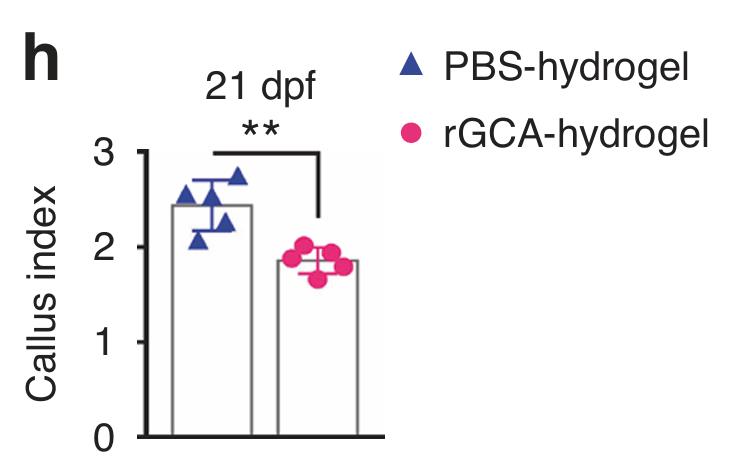 Fig1. The callus index of fractured femurs from PBS- and rGCA-treated mice at 21 dpf.
Fig1. The callus index of fractured femurs from PBS- and rGCA-treated mice at 21 dpf. -
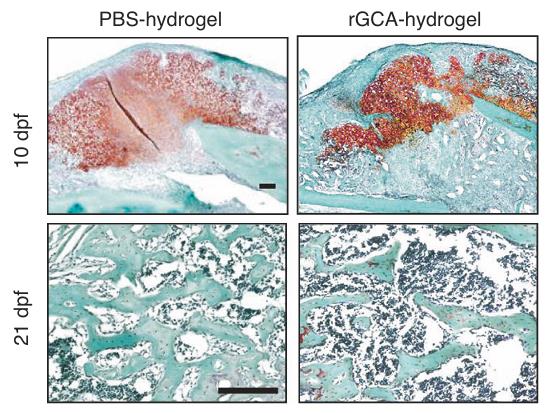 Fig2. Safranin O staining showed cartilage callus formation and woven bone area.
Fig2. Safranin O staining showed cartilage callus formation and woven bone area.
Case Study 2: Su T. et al. Nat Commun. 2024
When it comes to how bone and fat tissues talk to keep our metabolism in check, the exact details are still a bit mysterious. We’ve found that during obesity, GCA+ (grancalcin) immune cells start to pile up in the bone marrow and release a lot of GCA into the bloodstream. If we remove the Gca gene in certain immune cells, it helps male mice handle metabolic issues better when they are obese. On the flip side, adding more GCA to their system triggers fat tissue inflammation and makes them less sensitive to insulin. This happens because GCA attaches to the PHB2 receptor on fat cells, kicking off an immune response through a specific signaling pathway. This makes more inflammatory cells move in. Interestingly, antibodies that neutralize GCA can actually help reduce this inflammation and improve insulin sensitivity in obese male mice. So, GCA might be a promising target for tackling inflammation-related metabolic problems.-
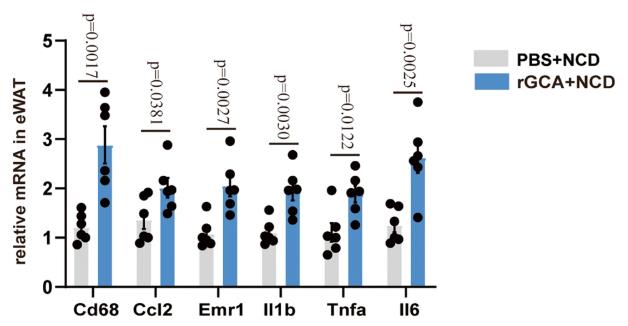 Fig3. Inflammatory cytokine gene expression levels in eWAT from NCD-fed WT mice treated with PBS or rGCA.
Fig3. Inflammatory cytokine gene expression levels in eWAT from NCD-fed WT mice treated with PBS or rGCA. -
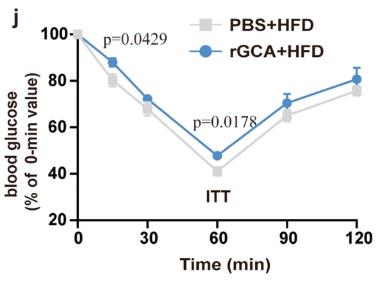 Fig4. ITT of HFD-fed animals treated with PBS or rGCA.
Fig4. ITT of HFD-fed animals treated with PBS or rGCA.
Quality Guarantee
High Purity
-
.jpg) Fig1. SDS-PAGE (GCA-4787H)
Fig1. SDS-PAGE (GCA-4787H)
-
.jpg) Fig2. SDS-PAGE (GCA-4911H)
Fig2. SDS-PAGE (GCA-4911H)
Involved Pathway
GCA involved in several pathways and played different roles in them. We selected most pathways GCA participated on our site, such as , which may be useful for your reference. Also, other proteins which involved in the same pathway with GCA were listed below. Creative BioMart supplied nearly all the proteins listed, you can search them on our site.
| Pathway Name | Pathway Related Protein |
|---|
-
 Fig1. Vascular ageing and ageing of the immune system are key predisposing factors in GCA pathogenesis. (Maira Karabayas, 2024)
Fig1. Vascular ageing and ageing of the immune system are key predisposing factors in GCA pathogenesis. (Maira Karabayas, 2024) -
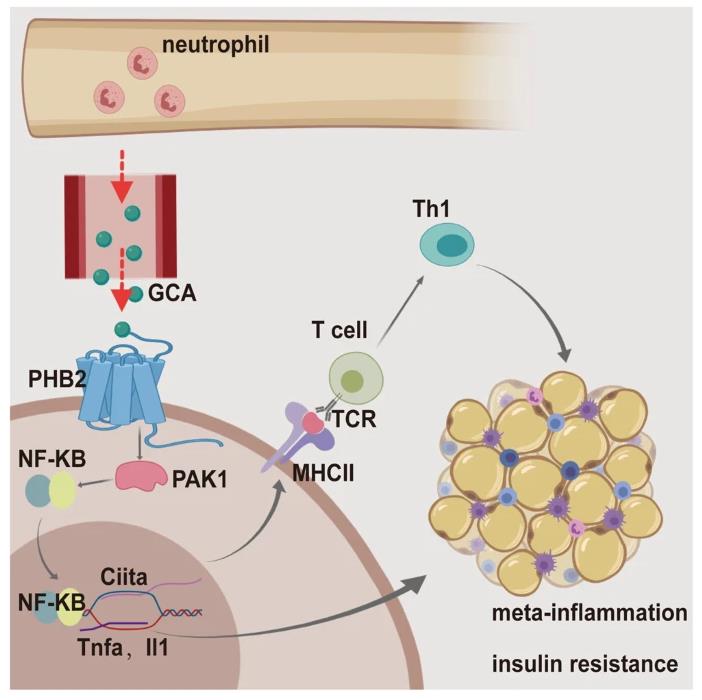 Fig2. Obesity induces neutrophils and monocytes-macrophages producing copious amount of GCA. (Tian Su, 2024)
Fig2. Obesity induces neutrophils and monocytes-macrophages producing copious amount of GCA. (Tian Su, 2024)
Protein Function
GCA has several biochemical functions, for example, calcium ion binding,calcium-dependent cysteine-type endopeptidase activity,protein binding. Some of the functions are cooperated with other proteins, some of the functions could acted by GCA itself. We selected most functions GCA had, and list some proteins which have the same functions with GCA. You can find most of the proteins on our site.
| Function | Related Protein |
|---|---|
| calcium-dependent cysteine-type endopeptidase activity | CAPN10,CAPN13,CAPN1A,CAPNS1A,CAPN2L,CAPNS1,CAPN3A,CAPN12,CAPN5,PDCD6 |
| protein homodimerization activity | AMICA1,CRYAB,C6orf108,P2RX4,CSF1,P2RX7,NDP,TCF12,FAP,S100A16 |
| protein binding | NPHP4,WDR25,PPP6R3,ALOX5AP,MCC,CYTH1,SCAMP1,CCDC50,IL15RA,HIST1H2AG |
| protein heterodimerization activity | PML,CEBPA,KCNA3,SYT14,BTBD11,Defa-rs7,TYRP1,MAFG,ALG2,HIST1H2BE |
| calcium ion binding | CDH17,DSC2L,PCDHB6,DOC2D,DAG1,S100B,PRRG2,PLSCR4,FBLN7,MEX3B |
Interacting Protein
GCA has direct interactions with proteins and molecules. Those interactions were detected by several methods such as yeast two hybrid, co-IP, pull-down and so on. We selected proteins and molecules interacted with GCA here. Most of them are supplied by our site. Hope this information will be useful for your research of GCA.
MAGEA8;EIF3H;ATXN1;EBNA2;RBFOX1
Resources
Related Services
Related Products
References
- Carmona, FD; Martin, J; et al. Genetics of vasculitis. CURRENT OPINION IN RHEUMATOLOGY 27:10-17(2015).
- Katsuyama, T; Sada, KE; et al. Current Concept and Epidemiology of Systemic Vasculitides. ALLERGOLOGY INTERNATIONAL 63:505-513(2014).


